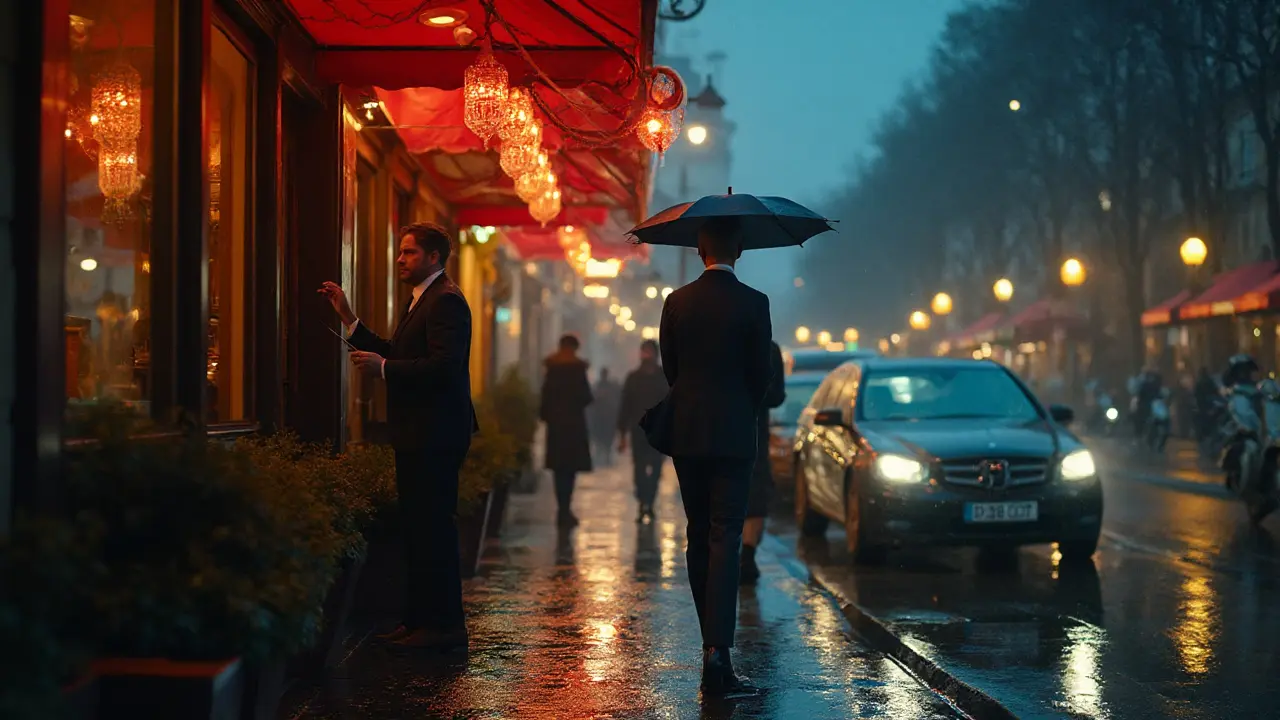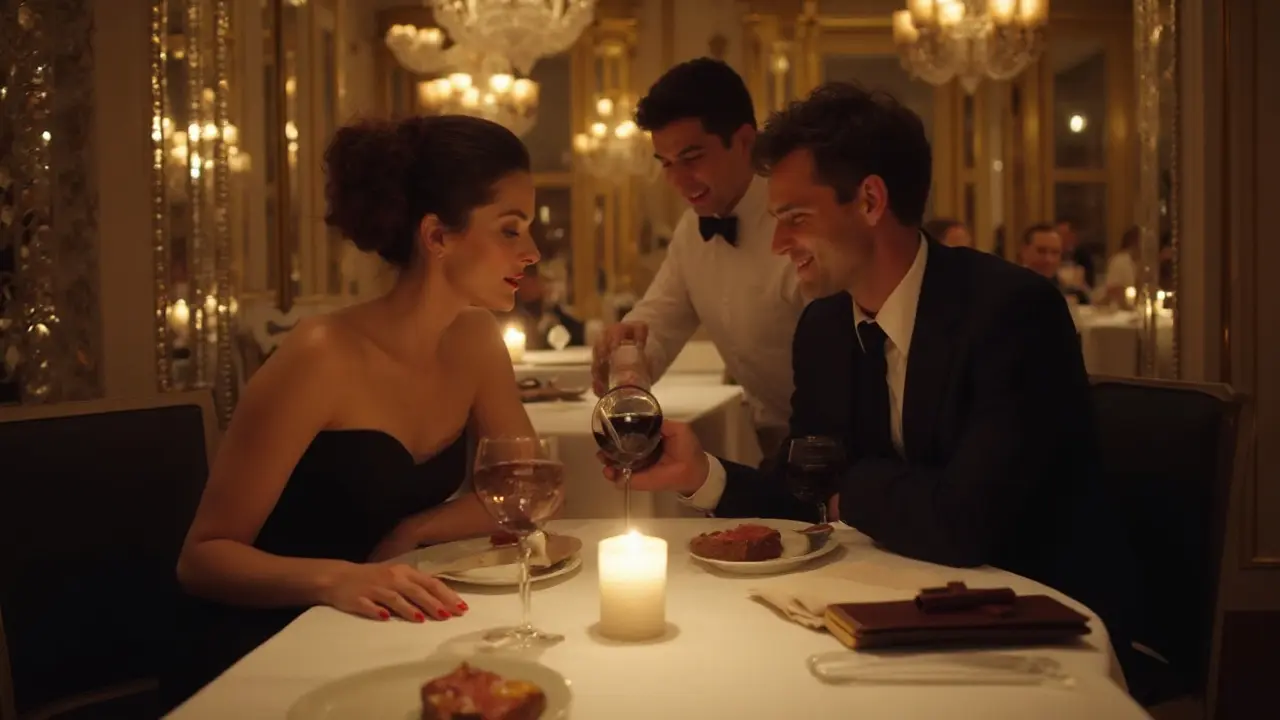Paris eats late, talks softly, and treats dinner like theater. That’s why high-end dining and companion culture often cross paths here. People host clients, dates, and sometimes professional companions at restaurants that know how to keep eyes off the table and attention on the plate. If you’re curious about the real link-how restaurants adapt, what etiquette matters, and how to plan a night that stays elegant and drama-free-this lays it out with zero fluff.
- The overlap is mostly about hospitality, privacy, and pacing-not shock value.
- Front-of-house pros in top rooms quietly manage seating, lighting, and timing to help pairs keep a low profile.
- Etiquette, smart venue choice, and clear expectations prevent awkward moments.
- Paris law is strict on paid sexual acts; companionship isn’t the same thing. Know the difference.
- Use simple tactics-banquettes, late seatings, low-ABV drinks-to keep the night smooth.
Where Dining and Companionship Actually Meet
Forget the clichés. The connection between fine dining and companionship in Paris is mostly practical. Restaurants trade in experience and discretion. Companions trade in presence and social ease. Put those together and you get rooms that quietly support relaxed conversation, long meals, and graceful service that never hovers.
Paris learned this a long time ago. Private salons, banquettes, and sound-dampening fabrics are part of the city’s dining DNA. You see it in the way captains steer guests to a half-moon banquette, how sommeliers read the mood, and how pacing adjusts if the table is deep in conversation. That choreography isn’t an accident. It’s the craft.
The money side matters too. Beverage programs-especially Champagne and low-intervention wines-are big margin drivers in high-end rooms. Industry surveys in France regularly show beverages making up a large chunk of revenue in fine dining, often north of a third. Quiet, unhurried tables tend to order more than rushed ones. So restaurants design for time: tasting menus with measured cadence, dessert trolleys that invite another 20 minutes, digestifs that tag in when coffee’s done. It’s hospitality, but it’s also good business.
Neighborhoods play their part. The 8th and 1st skew glossy: hushed rooms, jacket-friendly vibes, and menus built for classic, composed plates. Saint‑Germain (6th) offers art-book charm and polished bistros where conversation can breathe. East of the center-11th, 10th-you’ll find bistronomy energy: brighter rooms, tighter tables, and more casual service. Each one fits a different social brief. If you need privacy, go central and classic. If you want buzz, go east and modern.
Two timing notes. First, Paris’s second seating (after 9 pm) gives you cover-more locals, fewer cameras, and a calmer staff rhythm. Second, Sundays and Mondays can be quiet at the top end, so choice narrows. That can help (fewer eyes) or hurt (limited options). Plan accordingly.
And about prestige: Paris remains one of the densest Michelin cities in Europe. Whether you choose a heritage grand maison or a sharp neo-bistro, standards are high. The plates are a backdrop for conversation and connection, which is why this ecosystem fits the social side of companionship so well.
A Step‑by‑Step Playbook for a Discreet Paris Dinner
Use this as your no-drama checklist for a refined night that puts food and conversation first.
-
Define the brief in plain words. What’s the vibe-celebratory, low-key, or strictly businesslike? Two hours or a long glide? Answers shape everything: neighborhood, menu style, and seating.
-
Pick the right room, not just the right chef. Scan for banquettes, spacing between tables, and noise levels. If online photos show floor-to-ceiling windows on a busy street, think visibility. Solid picks: rooms with partitions, mezzanines, or private nooks. When booking, politely note “quiet table, low traffic” as a preference.
-
Book times that buy you privacy. Aim for 9-9:30 pm on Friday/Saturday or 8-8:30 pm midweek. Early birds can work for a business-like tone, but the second seating blends you into the city’s night rhythm. If it’s a tasting menu, confirm last seating to avoid a rushed service.
-
Dress code: read the room. Central arrondissements lean formal. East side leans smart casual. If there’s a question, aim one notch above the room’s average. Dark tones, no loud logos, and comfortable shoes (Paris cobbles are ruthless).
-
Set a calm arrival. Agree on meeting point outside the door (or the hotel lobby) to avoid awkward introductions at the host stand. Keep greetings warm but low-key. Paris staff pick up on tone; show you’re relaxed and they’ll mirror it.
-
Order for conversation, not chaos. Composed plates beat messy shares. Skip hard shellfish and finger-heavy items if you want clean momentum. On wine, lower‑ABV options (grower Champagne, light reds) keep the night clear-headed. If one person isn’t drinking, tell the server early so they can offer half pours or non‑alcoholic pairings without fuss.
-
Use quiet signals to steer pacing. Close the menus together to invite ordering. Place cutlery at 4 and 8 o’clock to show you’re resting, 3 and 9 when finished. A gentle “We’re in no rush” early on prevents a race. Paris servers understand tempo better than most; give them a headline and they’ll handle the beats.
-
Handle photos and phones with care. Flash off. One quick shot max if you must. Never point a phone toward nearby tables. If you’re managing privacy, say, “No photos tonight-let’s just enjoy it,” and move on.
-
Pay like a pro. In France, service is included. Add 5-10% for exceptional care by rounding up or leaving notes on the receipt. Ask for the bill (l’addition, s’il vous plaît) discreetly. If you need separate receipts (e.g., one for food, one for wine), ask softly before payment.
-
Exit strategy. If privacy matters, skip the door-side linger. Thank the staff, walk 50 meters, then call a car. If you want a nightcap, choose a quieter hotel bar over a crowded corner spot.
Pro tip: If the table next to you gets loud or nosy, ask the floor manager for a slight reposition “for the acoustic” with a smile. Paris rooms are used to subtle reshuffles; it’s not a scene.

Real‑World Scenarios and Micro‑Itineraries
Here are grounded setups that match different goals, budgets, and comfort levels-no name‑dropping, just formats that work.
-
Classic hush in the 8th. Aim for a calm, heritage dining room with plush banquettes. Book the second seating (9 pm). Start with a grower Champagne, then a light Burgundy. Order composed courses-think turbot or pigeon over saucy pasta. Two hours, tops. Perfect if you want polished service, privacy, and a slow landing.
-
Left Bank art crowd, low visibility. Pick a refined Saint‑Germain bistro with linen and lampshades. 8:30 pm sit. One shared starter (tartare or seasonal veg), then two mains. Keep the wine to one bottle. Stroll across the Seine after, not the busy boulevard. Easy, romantic, and unflashy.
-
Bistronomy buzz in the 11th. If you want energy without scene-chasing, go modern bistro: counter seats or a side banquette if possible. 9:15 pm sit works best. Glass pours let you try two or three wines without overdoing it. Expect tighter tables; if discretion is key, angle for the wall side.
-
Businesslike, in-and-out. Central 1st or 2nd with a firm 90‑minute game plan. One cocktail or a half-bottle, two courses, espresso. Ask for the check when mains land. It signals efficiency without feeling rushed.
-
Dessert-first glide. For a light touch, meet at a serious pâtisserie or a hotel pastry bar. Talk sweets, share two plates, and skip big alcohol. It’s surprisingly intimate and very Parisian without the weight of a full dinner.
What if the social dynamic leans public? Pick a brighter room where you’re one of many. What if it leans private? Choose carpets, curtains, and corners. Both are easy to find if you plan by mood first, chef second.
Checklists, Heuristics, and a Handy Table
Use these quick tools to keep your night focused and relaxed.
Discretion checklist
- Banquette or wall-side table noted at booking
- Second seating (after 9 pm) when privacy matters
- Low‑ABV start (Champagne, spritz, or NA cocktail)
- Composed plates over messy shares
- Phones away, flash off, no tagging locations live
- Ask for separate receipts softly if needed
- Short walk before calling a car
Conversation guardrails
- Food, travel, art shows, weekend markets, new bakeries
- Skip income, politics, and personal IDs; Paris rooms carry sound
- Compliment the service or a dish to reset if things get tense
Ordering heuristics
- 2 courses + shared dessert beats 3 heavy courses for flow
- Half-bottles and carafes keep pace without waste
- Tell the sommelier the mood (“fresh, not heavy”) and budget range
Quick French that actually helps
- Bonjour/Bonsoir - the magic key; always start with this
- Une table au calme, s’il vous plaît - a quiet table, please
- On prend notre temps - we’re taking our time
- L’addition, s’il vous plaît - the bill, please
Neighborhood cheat table
| Neighborhood | Vibe | Typical Spend for Two (food) | Late Seating Likely | Noise Level | Dress Code Signal |
|---|---|---|---|---|---|
| 1st/2nd (Palais Royal/Opéra) | Classic, polished | €120-€220 | Yes (Fri-Sat) | Low-Medium | Smart to formal |
| 8th (Golden Triangle) | Lux, discreet | €180-€300+ | Yes | Low | Formal preferred |
| 6th (Saint‑Germain) | Refined bistro | €110-€200 | Often | Low-Medium | Smart casual |
| 11th (Bastille/Oberkampf) | Bistronomy, lively | €80-€150 | Yes | Medium-High | Casual chic |
| 10th (Canal Saint‑Martin) | Trendy, youthful | €70-€140 | Sometimes | Medium | Relaxed |
| 16th (Trocadéro/Passy) | Quiet, residential | €120-€200 | Often | Low | Smart |
| 18th (Montmartre) | Romantic, tourist mix | €80-€160 | Sometimes | Medium | Smart casual |
Those ranges reflect food only in 2025; wine can double that easily, especially in the 1st, 2nd, and 8th. Plan your spend with that in mind.

Mini‑FAQ and What to Do When Things Go Sideways
Is it legal to bring a professional companion to dinner in Paris?
Bringing any adult to dinner is legal. In France, the sale of sexual acts by adults isn’t criminalized, but purchasing sexual services is illegal since 2016 (Law n° 2016‑444). That law targets paid sexual acts, not social dining, but lines can blur. If you’re paying for companionship only, say so and keep boundaries very clear. When in doubt, get proper legal advice and respect local law.
Do high‑end restaurants care who you’re with?
They care about behavior, not labels. Be polite, dress to the room, keep phones away, and pay on time. If you do that, you’re welcome.
How much should I tip?
Service is included in France. If service shines, round up or add 5-10%. Hand it quietly or leave it on the receipt line if the terminal allows.
Will staff speak English?
Often, yes-especially in central Paris. Opening with a simple “Bonsoir” helps a lot. If you hit a wall, point to the menu item and smile; Paris service is good at reading intent.
What about photos and privacy?
Hotels and serious restaurants are privacy‑aware. GDPR makes businesses cautious about images. Don’t photograph staff or other guests. If someone points a camera at your table, ask the manager for help.
Is there a dress code?
Many top rooms expect smart attire. Jackets aren’t always required, but they rarely hurt. Sneakers can pass if clean and minimal. Avoid gym wear and logo-heavy pieces in the 8th.
Why do companions and fine dining dovetail in Paris?
Because dinner is a social ritual here. The city’s service culture-lighting, pacing, quiet-supports conversation. For people who work in social hosting, that’s a perfect stage.
What if the reservation falls through?
Plan B: keep two backups in the same area-one high, one casual. Walk‑ins after 9 pm are more likely east of the center. Call the room, ask for the floor manager, and explain you’re nearby and flexible. You’ll often land a corner.
What if someone recognizes me?
Keep it neutral. A friendly nod ends 95% of encounters. If someone presses, excuse yourself to the restroom and speak to the manager. They can reseat you or guide you to a quieter spot for dessert.
What if service is slow or the room is loud?
Slow: say, “We’re happy to pace a touch faster if that’s possible.” Loud: ask for a reposition “for the acoustic.” Both are standard requests here.
What if alcohol hits harder than expected?
Switch to water and order something salty (olives, cheese). Ask for a taxi at the host stand. Don’t drive. Paris will be here tomorrow.
Can I share the bill?
Yes, but it’s smoother if one person pays and you settle in private later. If you really need to split, ask early and keep it simple (food vs wine, or 50/50).
Next steps, based on who you are
- First‑timer in Paris: Choose Saint‑Germain or the 1st for predictable service. Book 8:30 pm, ask for a quiet corner, keep it to two courses.
- Frequent traveler: In the 8th, use the second seating and request a banquette. One bottle, shared dessert, no photos, short exit.
- On a budget but want elegance: Go 11th for bistronomy. Early or late sits, carafe wine, and a great pastry shop for a tidy finish.
- Privacy‑first: Hotel dining rooms are your friend. Carpets, low light, and practiced staff. Ask for a table “au calme.”
One last framing thought: the point isn’t to turn dinner into performance. It’s to let food, service, and conversation carry the night while you stay present and respectful. That’s Paris hospitality at its best-and why the worlds of dining and escorts in Paris often move in parallel without causing a scene.
Notes on sources and context: The Paris Convention and Visitors Bureau’s 2024 barometers describe sustained high‑end dining demand around major events. UNWTO’s latest reports still place France at or near the top for arrivals. Michelin’s 2025 selection keeps Paris among Europe’s densest star clusters. Industry groups like UMIH and INSEE data sets continue to show beverages as a major revenue share in higher‑end hospitality. Laws around paid sexual acts reference France’s Law n° 2016‑444 (2016). For precise legal guidance, consult official French government publications.

